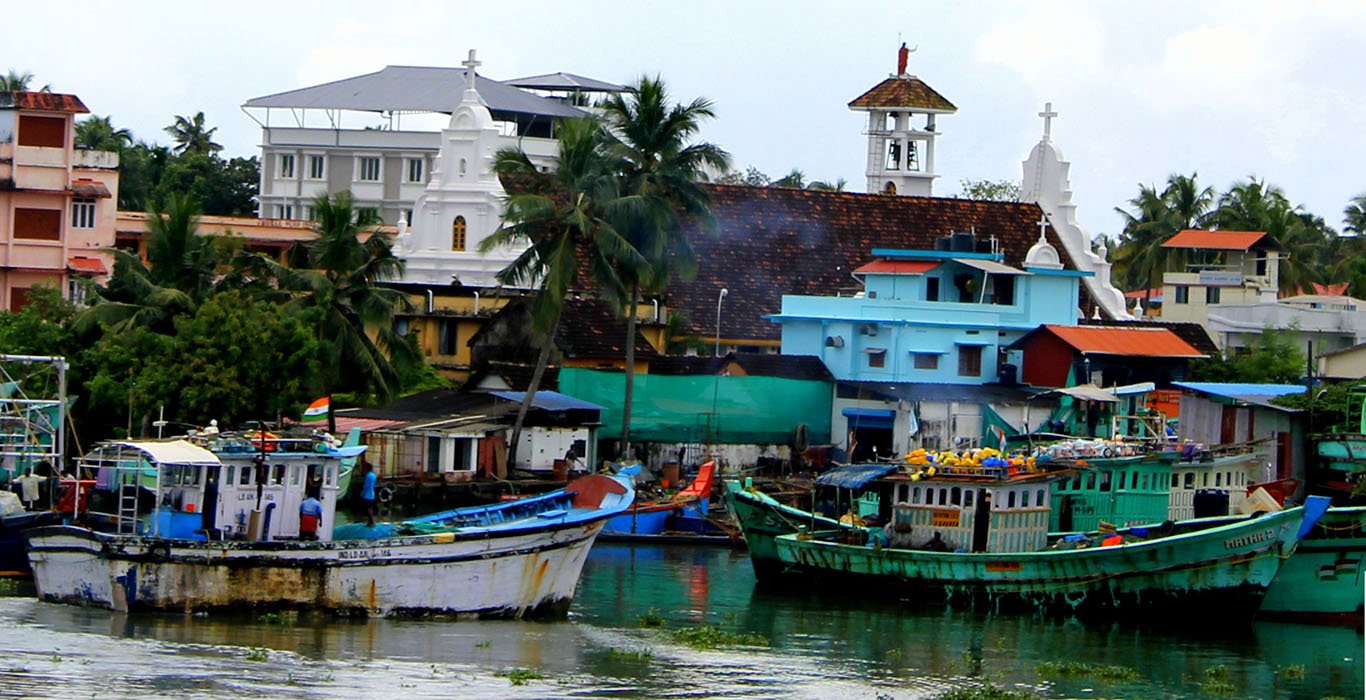Fort Kochi
Photography: Gokul Ramachandran
Even though we have been in Kochi for quite a long time, this experience of traveling and exploring Fort Kochi was different and exciting altogether. Fort Kochi gives us new stories to write about, all the time. This time our TKE team traveled from the Cochin International Airport to Fort Kochi.
Fort Kochi is a blend of culture, spices and lots of love and this place has got an age-old history of colonial trade, lively art and non-comparable taste of seafood cuisine which attracts a large number of tourists to this part of the World. Even though there is an influx of western travelers to this place, the reminiscent indigenous culture of Kerala is still preserved well. The streets of Fort Kochi ooze antiques and finger licking good food.
Fort Kochi is a coastal hamlet and the primary occupation of the residents here are fishing and trade. One thing that astonished us was the fact, that there are a vast number of people hailing from different cultures, communities and engaged in different occupations living in peace and harmony, a rare sight these days. Time to time there have been many different communities living here in Fort Kochi hence we can witness the heady mix of architectural style houses.
Fort Kochi is accessible by road or ferry. The bus ride from Ernakulam town, which is nearly 13 km away, takes about an hour and the ferry ride from the Main boat jetty at Ernakulam takes about 20 minutes. While if you are traveling from Airport then there are several other options such as KURTC Volvo AC buses to Fort Kochi or you can take Uber Hire. Since Kochi Metro has been recently inaugurated, it’s always an easy option to board the train to Maharaja’s College and take the ferry
We reached Fort Kochi by 7.30 am and we were hungry for breakfast. We head towards Kashi Art Cafe which is the Top choice for breakfasts. This place in Fort Kochi is natural-light-filled with a zen, casual vibe and solid wooden tables spread around in a semi courtyard space. The burning incense sticks along with the soothing music in the background calmed us down. We had the Farmer’s omelet (stuffed with potatoes and vegetables), lovely homemade bread, two pats of butter with two slices of watermelon with freshly brewed coffee! Delicious, is the word. After our tummy filling breakfast and caffeine to keep us moving, we decided to take a stroll through the streets of Fort Kochi.
Walking aimlessly to explore more about the place, it was a blessing in disguise that we stumbled upon the interesting landmark St. Francis Church, where the Portuguese explorer Vasco da Gama was originally buried but later his remains were taken to Lisbon. This huge building was crafted in timber by the Portuguese in 1503. The church, now reworked with stone masonry and wooden ceilings, form the nucleus of the town. The colossal windows in green and blue along with the monumental rustic chandeliers are the highlights of this church, not to forget the Vasco da Gama tombstone. With that dose of history, we decided to step out from the church to the bustling town of Fort Kochi which was a colourful sight. We saw a bit of Kashmir and Tibet fighting for their places in selling their products. It was a sheer beauty to see different cultures in a single street. We did a bit of shopping from Walton’s Antique and Clothing shop. This place is beautiful for it’s natural and hand-woven clothing for both men and women.
We move forward in search of other monuments and while we were walking through the Rose Street, we see the Vasco House which is one of the oldest Portuguese houses in India and is said that Vasco da Gama built it in the early sixteenth century. Vasco House sports the typical European glass paned windows and balconycum-verandahs characteristic of the times. Now the Vasco house functions as a guest house for the tourist traveling to Fort Kochi.
As we walk towards the Indo-Portuguese Museum, which rests atop a small hillock, inside the Bishop’s House compound, little did we know that the time was 12 pm and it was scorching hot? We were soon looking for a shack which could supply us with some refreshment and soon we found a small shop which served “Kulukki Sherbet,” which is lemonade made in Keralite style. After the energy boosting drink, we again start footslogging and clicking pictures of the scenic beauty and finally reached the museum, where precious artifacts collected from various churches are kept for display. There are five main sections of this museum, which are Altar, Treasure, Procession, Civil Life and Cathedral. A piece of the altar made of teak wood in the 16th century is one which no one should miss encountering. This altar is from the Church of Our Lady of Hope, Vypeen. As we were about to leave the museum, the curator said that we are missing some real history of why this place got the name ’Fort Kochi.’ He then took us downstairs and showed us the well preserved and the only leftover part of the Fort which was built in the 14th century. The crumbled parts of the fort flooded with water as the level of water are high in that area. The most interesting thing was the two area parallel being completely dry because those were gigantic doors underneath the basement which was not dug as to preserve the dregs of the fort.
Since Fort Kochi is known for its versatile culture and cuisine, we decided to go to Asian Kitchen by Tokyo Bay, a Japanese restaurant. We were served with Dim Sum Platter which includes Vegetable, Prawns, and Chicken. The vegetable dim sum is stuffed with Chives and Cashewnut and it was mouthwatering. We also tasted Sushi Platter, which consists of different varieties of Sushi. Sushi is a Japanese dish consisting of cooked vinegared sticky rice combined with cured seafood, vegetables, and fruits wrapped in thin seaweed sheets. These are served with Soya sauce and Wasabi paste. The feast was wrapped up with a plate of Tofu, named Tahu samrot. It is a deep fried Tofu tossed with sweet and spicy samrot sauce.
The beautiful graffiti walls and the soothing smell of the sea captivated us to the beach. It was good that we equipped ourselves with comfortable beach slippers and we headed towards the beach. Towering Chinese fishing nets overlooking the Arabian Sea are a common sight in Fort Kochi; a dear spot for locals and visitors to hang out. Locally known as Cheenavala, the huge cantilevered fishing nets are carrying a bygone legacy of one of the first visitors to Malabar Coast. Apart from these Chinese nets, the sun creates the spectacular silhouette of the nets against the luminous red sky. We have this craving to have some fresh catch from the sea fried and sold at the small eateries and shops. We see live lobsters, fish, crabs and all sorts of seafood lined beautifully at the shacks for sale.
One of the places we wanted to be and have tea was Teapot cafe in Fort Kochi. This place is tucked away from the beach and in midst of the shopping areas. The place has N number of teapot collection from the different era and looks amazing with the antiques racked in the shelves.
It was around half past six and we realized that we were exhausted and drowsy as we paraded over Fort Kochi and we hired a UberGo to CGH Eight Bastion to shower and rest.
Fort Kochi visit is like reliving the many facets of its history. People from many cultures and different ethnic groups have made Fort Kochi their haven for many years and this Island has always greeted the visitors with love. While we were in Fort Kochi, it felt like we were home away from home and that’s the specialty of this beautiful place.



